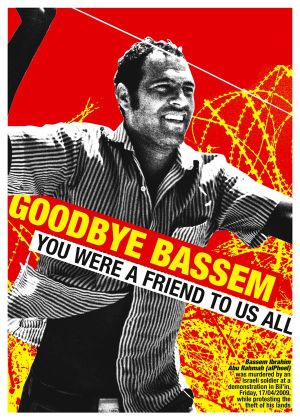Tag: Bassem Abu Rahmah
-
Remembering Bassem Abu Rahma
17 April 2010 | Anarchists Against the Wall On April 17th we mark one year to losing Bassem, who we also knew as Pheel. Although he is greatly missed at the village and during every demonstration, his spirit keeps on living with each and every one of us. For this anniversary we decided to share…
-
Dismantling Impunity: Campaign to help Palestinian victims of army abuse
9 February 2011 | Popular Struggle Coordination Committee The Popular Struggle Coordination Committee is proud to announce a new campaign, the “Dismantling Impunity Fund”. This fund will directly challenge Israel’s culture of impunity surrounding the murder and maiming of Palestinians. The fund will be managed by a committee that will include representatives of Popular Committees…
-
Bil’in: A village in mourning
9 January 2011 | Al Jazeera, Renee Lewis One West Bank family has paid the highest price for their village’s peaceful pursuit of justice. People say that time heals, but the Abu Rahmah family feels as though it is living in a recurring nightmare from which there is no respite. Their nightmare is set in…

